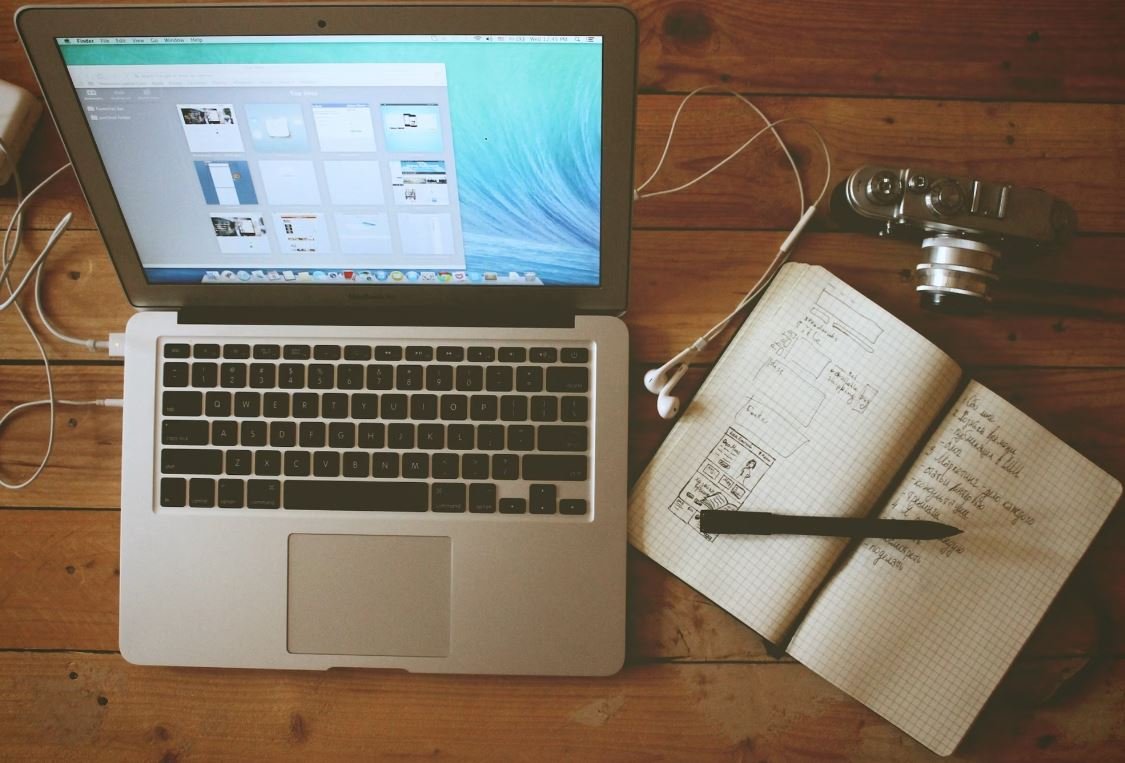Beats per Minute
When it comes to music, the tempo or “beats per minute” (BPM) plays a crucial role in the overall feel and energy of a song. BPM refers to the number of beats or pulses occurring in a minute, which determines the speed at which the music is played. Understanding BPM and its effect on music is important for both musicians and music enthusiasts alike.
Key Takeaways:
- BPM determines the speed at which a song is played.
- Higher BPMs generally result in faster and more energetic music.
- Lower BPMs create a slower and calmer atmosphere.
- BPM can influence emotions, motivation, and exercise intensity.
Exploring Beats per Minute
**BPM** is a crucial element in music production. It serves as a **foundation** for musicians and producers to define the rhythm, pace, and energy of a song. The **tempo** provided by BPM can **influence** the mood and atmosphere of a musical piece, making it a key factor in determining the genre or style of music. For example, a higher BPM is often associated with upbeat and danceable music genres like **electronic dance music (EDM)**, while a slower BPM is commonly found in **ambient** or **relaxation** music.
Music **evokes emotions** and engages our senses. BPM plays a significant role in this process. A faster BPM generally results in more stimulating and energizing music, eliciting feelings of excitement and exhilaration. On the other hand, a slower BPM can create a calm and relaxing atmosphere. This is why **downtempo** or **chillout** tunes often feature lower BPMs, offering a more soothing and contemplative experience.
BPM is not just relevant to musicians and producers, it also has an impact on various aspects of our lives. For **exercise enthusiasts**, knowing the BPM of a song is valuable as it allows them to select music that matches their desired intensity level. Research has shown that exercising to music with an appropriate BPM can improve **athletic performance** and **motivation**. Additionally, **DJ performances** heavily rely on BPM as it helps DJs maintain a consistent tempo and seamlessly transition between songs during live sets.
BPM in Music
| Genre | BPM Range |
|---|---|
| Electronic Dance Music (EDM) | 120-140 |
| Pop | 100-130 |
| Hip Hop | 80-115 |
| Ambient/Relaxation | 60-80 |
| Rock | 100-160 |
Different music genres have distinct BPM ranges that contribute to their unique styles and characteristics. For instance, EDM typically falls within the range of 120-140 BPM, known for its energetic, dancefloor-friendly tunes. Hip hop, on the other hand, tends to have a lower BPM range of 80-115, allowing for a laid-back and groovy flow. It’s interesting to note how these variations in BPM contribute to the feelings and emotions associated with each genre, shaping the overall musical experience.
How to Find the BPM of a Song?
- Manually count the beats in a minute while listening to the song. Ensure accuracy by using a metronome.
- Use a BPM detection software or mobile application that analyzes the audio and provides the BPM information.
Determining the BPM of a song can be accomplished through various methods. One approach is to manually count the beats in a minute while listening to the song, using a metronome to ensure accuracy. Alternatively, there are numerous **BPM detection software** and **mobile applications** that can analyze the audio and provide the BPM information automatically. These tools are particularly useful when dealing with complex compositions or when the BPM is not readily apparent.
| Benefit | Description |
|---|---|
| Creating playlists for specific activities | Selecting songs with suitable BPM for different activities (e.g., workout, studying, relaxing) |
| Creating seamless DJ sets | Transitioning between songs with similar BPM to maintain a consistent flow |
| Improving exercise performance | Selecting music with appropriate BPM to synchronize movements and enhance motivation |
Knowing the BPM of a song can have several benefits. It allows individuals to create playlists tailored to specific activities, such as **workouts**, **studying**, or **relaxing**, by selecting songs with suitable BPMs that match the desired mood or energy level. DJs can also benefit from knowing the BPM of songs, as it enables them to create seamless live sets by transitioning between tracks with similar BPMs, maintaining a consistent flow and keeping the audience engaged. Additionally, for those engaging in physical activities, having knowledge of the BPM can aid in improving exercise performance, as choosing music with an appropriate BPM can help synchronize movements and enhance motivation.
The Power of Beats per Minute
**Beats per minute** play a vital role in shaping the mood, energy, and style of music. With varying BPM ranges found across different genres, music enthusiasts can explore a wide array of emotions and experiences. Whether creating playlists, exercising, or enjoying live performances, understanding the significance of BPM enhances our appreciation and connection to the music we love.

Common Misconceptions
Paragraph 1: BPM determines a song’s genre
There is a common misconception that the beats per minute (BPM) of a song determines its genre. However, while certain genres may have a general range of BPM that is commonly associated with them, it is not an absolute determinant of the song’s genre.
- BPM can vary within a single genre, allowing for different styles and moods.
- A song’s instrumentation, melody, and lyrics play a significant role in defining its genre.
- The BPM of a song may change throughout, especially in more experimental or progressive genres.
Paragraph 2: Faster BPM means better for workouts
Many people believe that songs with a faster BPM are always better for workouts because they provide more energy and motivation. However, the suitability of the BPM for exercising depends on the type and intensity of the workout as well as personal preferences.
- The BPM should match the desired heart rate range for the particular workout.
- Some workouts, such as yoga or relaxation exercises, may benefit from slower BPM to match the pace and encourage calmness.
- The motivational effect of a song depends on more than just BPM; lyrics, rhythm, and personal connection are also important factors.
Paragraph 3: Slower BPM means a song is boring
Another misconception is that songs with slower BPM are automatically boring or lack excitement. However, slower BPM can create a different atmosphere and evoke emotions that are equally powerful and captivating.
- Slower BPM can enhance the depth and intensity of certain genres, such as ballads or classical music.
- The focus on melody, lyrics, and instrumentation may highlight the song’s emotional impact rather than relying on a fast beat.
- Slower BPM can create a sense of relaxation or reflection, perfect for unwinding or introspective moments.
Paragraph 4: Higher BPM always results in a danceable song
It is often assumed that high BPM automatically results in a danceable song. While many dance-oriented genres do feature fast beats, danceability is not solely determined by BPM.
- The song’s rhythmic structure, syncopation, and emphasis on the downbeat also contribute to danceability.
- Melodic elements and lyrics can affect how danceable a song feels, even with a high BPM.
- Similarly, not all songs with high BPM are meant for dancing, as they can cater to other genres such as punk or metal.
Paragraph 5: BPM is the sole factor in determining a song’s energy
BPM is often mistakenly believed to be the only factor that determines a song’s energy level. However, energy in music is influenced by various elements, and BPM is just one piece of the puzzle.
- The dynamics, instrumentation, production quality, and vocal delivery all contribute to the overall energy of a song.
- Even at a slower BPM, a song can have high energy through the use of powerful vocals, driving guitars, or intense lyrics.
- The arrangement and structure of a song can enhance or diminish its energy, regardless of BPM.

Introduction
This article explores the fascinating world of beats per minute (BPM) and its significance in various aspects of life. From music to exercise, BPM plays a crucial role in setting the pace, determining mood, and even affecting our emotions. This collection of tables presents interesting data and information related to BPM, highlighting its diverse applications and intriguing insights.
The Heart’s Musical Rhythm
Did you know that the average resting heart rate for adults ranges from 60 to 100 beats per minute? However, various factors can influence this BPM range, such as age and fitness level. Here’s a look at the typical heart rates for different age groups:
| Age Group | Resting Heart Rate (BPM) |
|---|---|
| Children (6-15 years) | 70-100 |
| Teenagers (16-19 years) | 60-90 |
| Adults (20-60 years) | 60-100 |
| Elderly (60+ years) | 40-90 |
Musical Genres and Their Tempos
Music genres vary greatly in terms of their speed and energy. The following table presents a selection of genres along with their average BPM range, providing insight into the rhythmic diversity of music:
| Genre | Average BPM Range |
|---|---|
| Classical | 60-120 |
| Jazz | 80-140 |
| Rock | 100-140 |
| Pop | 90-120 |
| Electronic | 120-160 |
Workout Intensity Levels
When it comes to exercise, the intensity level, often measured by BPM, can greatly impact the effectiveness of a workout. The American Heart Association recommends targeting different heart rate zones based on fitness goals. Here’s a breakdown of these zones:
| Fitness Zone | Average BPM Range | Goal |
|---|---|---|
| Warm-up | 50-60% of max HR | Prepare the body for exercise |
| Fat Burning | 60-70% of max HR | Burn calories and increase endurance |
| Aerobic | 70-80% of max HR | Improve cardiovascular fitness |
| Threshold | 80-90% of max HR | Enhance stamina and speed |
| Maximum Effort | 90-100% of max HR | Achieve peak performance |
Music and Mood
Music has the remarkable ability to influence our emotions and mood. The relationship between tempo and mood can be quite intriguing. Here’s a glimpse into how different BPM ranges are commonly associated with specific emotions:
| BPM Range | Emotion |
|---|---|
| 60-80 | Relaxation |
| 80-100 | Optimism |
| 100-120 | Excitement |
| 120-140 | Energized |
| 140-160 | Intense |
Popular Dance Styles and BPM
Dance styles are often characterized by their specific tempo. Here’s an overview of popular dance styles and their associated BPM ranges, showcasing the correlation between movement and beats per minute:
| Dance Style | BPM Range |
|---|---|
| Ballet | 100-160 |
| Hip-Hop | 85-110 |
| Salsa | 150-250 |
| Tango | 120-130 |
| Breakdance | 120-160 |
BPM and Attention Span
The tempo of background music can impact our attention span and productivity. Researchers have explored this relationship, revealing interesting findings regarding optimal BPM ranges for various tasks. Take a look at how different activities align with specific BPM ranges:
| Activity | Optimal BPM Range |
|---|---|
| Reading | 50-80 |
| Writing | 60-100 |
| Creative Work | 100-120 |
| Exercise | 120-140 |
| Focused Work | 140-180 |
Heart Rate and Life Expectancy
Research suggests that there may be a correlation between resting heart rate and life expectancy. Here’s a glimpse into potential associations based on different BPM ranges and their corresponding average life expectancies:
| Resting Heart Rate (BPM) | Average Life Expectancy (years) |
|---|---|
| Below 60 | Longer than average |
| 60-80 | Average |
| 80-100 | Slightly lower than average |
| Above 100 | Potentially shortened |
The Impact of Music on Exercise Performance
Music can significantly affect our exercise performance and overall enjoyment during workouts. The following table illustrates the influence of BPM on treadmill running speed:
| BPM Range of Music | Average Increase in Running Speed (%) |
|---|---|
| 100-120 | 5% |
| 120-140 | 10% |
| 140-160 | 15% |
| Above 160 | 20% |
Conclusion
BPM is a versatile and captivating element that impacts various aspects of our lives. From the rhythm of our hearts to the tempo of music and its effect on our emotions, BPM plays a significant role. Understanding the relationship between BPM and different activities can provide valuable insights into optimizing performance, mood, and overall well-being. Harnessing the power of beats per minute can lead to enhanced experiences, heightened productivity, and improved quality of life.
Frequently Asked Questions
What is Beats per Minute (BPM)?
Beats per Minute (BPM) is a measurement used in music to indicate the tempo, or speed, at which a piece of music is played or composed. It represents the total number of beats that occur in one minute of music.
How is Beats per Minute (BPM) determined?
BPM is typically determined by counting the number of beats that occur within a specific time frame, usually one minute, using a metronome or other tempo measuring device. The tempo can vary depending on the musical genre and the desired effect of the composition.
Why is Beats per Minute (BPM) important in music?
BPM is important in music as it helps musicians and performers establish and maintain a consistent tempo throughout a piece. It also helps DJs mix tracks together seamlessly and allows dancers to synchronize their movements to the rhythm of the music.
What are some common BPM ranges in music?
Some common BPM ranges in music include:
– Slow Tempo (60-80 BPM): Ballads, slow waltzes
– Medium Tempo (80-120 BPM): Pop, rock, country
– Fast Tempo (120-160 BPM): Dance, electronic, hip-hop
– Very Fast Tempo (160+ BPM): Drum and bass, hardcore
How can I determine the BPM of a song?
There are various software and online tools available that can detect and display the BPM of a song. You can also manually count the beats in a specific time frame and calculate the BPM using a metronome or a BPM counter.
What is the ideal BPM for exercising or running?
The ideal BPM for exercising or running may vary depending on personal preference and fitness level. However, most fitness experts recommend selecting songs with BPM ranging from 120 to 140 for moderate-intensity workouts and around 160-180 BPM for more intense cardiovascular exercises.
Can BPM affect mood and emotions?
Yes, BPM can have an impact on mood and emotions. Slower BPMs often induce a relaxed and calming effect, while faster BPMs tend to be more energizing and exhilarating. Different tempos and rhythmic patterns can evoke specific emotions and enhance the overall feel of a song.
How does BPM impact DJ mixing?
BPM is crucial for DJs during mixing as it allows them to match the beats and seamlessly transition between songs. By aligning the BPMs of different tracks, DJs can create a cohesive and continuous flow of music, ensuring a smooth and enjoyable listening experience.
Is BPM the same as tempo?
Yes, BPM and tempo essentially refer to the same concept in music, which is the speed at which a piece of music is played. BPM is a specific unit of measurement used to express the tempo in beats per minute.
Are there any standards for BPM labeling?
While there are general guidelines for labeling BPM ranges, there is no official standard for categorizing songs based on their BPMs. Different genres and subgenres may have their own conventions, but it ultimately depends on the discretion of the artist or producer.




